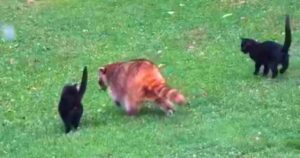In the vast skies over the Pacific, life keeps finding new ways to surprise us. On the quiet shores of Midway Atoll, the world’s oldest known wild bird — a Laysan albatross named Wisdom — has just hatched another chick at the remarkable age of 70.
Full Story: Man Loses 360 Pounds Naturally—Internet Rallies to Support His Next Step
A Living Legend
Each winter, millions of albatrosses return to Midway Atoll National Wildlife Refuge, part of the Hawaiian archipelago, to nest in the same spot with the same mate.
Among them is Wisdom, who has been raising chicks with her long-time partner Akeakamai since at least 2012, when biologists first identified him.
At 70, Wisdom is still defying every biological expectation. Scientists estimate she’s raised 30 to 40 chicks since she was first banded in 1956, and some of her offspring have already returned to nest just a few feet from where they were born.
“Every year that Wisdom comes back, she teaches us how long seabirds can live and keep thriving,” said U.S. Fish and Wildlife biologist Dr. Beth Flint. “She’s not just surviving — she’s still creating new life.”
A Record Flight Path
Her resilience is matched only by her mileage. By the time she turned 60, Wisdom had flown an estimated 2–3 million miles — the equivalent of traveling from the Earth to the Moon and back up to six times.
Like all Laysan albatrosses, Wisdom spent her first five years of life entirely at sea before touching land again to breed. Every year since, she has returned to the same refuge, where nearly 70% of all Laysan albatrosses gather to raise their young.
Related Story: The Hidden Meaning Behind Princess Diana’s Cannes Gown — A Heartfelt Farewell to Grace Kelly
Lessons from the Sky
Albatross couples share every parenting duty — taking turns incubating their single egg for 65 days, then traveling thousands of miles across the ocean to bring food back to the chick.
By June or July, the fledglings take their first flight, beginning a cycle of migration and return that can last decades.
Wisdom’s latest chick is a living reminder that endurance isn’t just about surviving — it’s about continuing to give, even when the odds say you shouldn’t.
For scientists, she’s a data point that rewrites what we know about avian longevity. For everyone else, she’s a quiet symbol of persistence — proof that some animals carry their stories across oceans and generations without ever stopping to rest.


